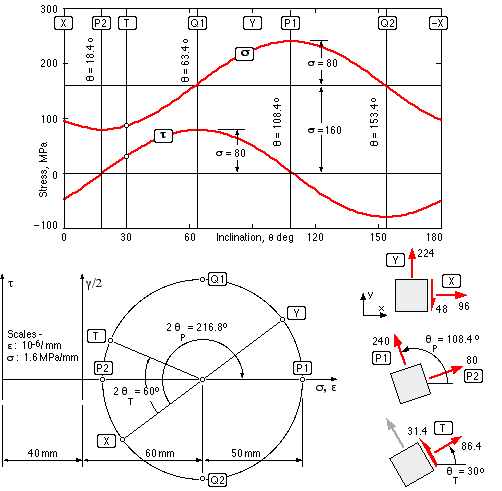
EXAMPLE
Given the surface strain state : εx = 2 E-4 (ie. 2x10-4), εy = 10 E-4, γxy = -6 E-4 determine the principal stresses, the planes in which they occur, and the stress components on the t-plane inclined at 30o from the x-reference. Take E = 200 GPa, ν = 0.25 (ie. the material is not steel).
Analytic Approach
Transforming the given strain Cartesian components into the basic strain triad via ( 3b):-
εm = 6 E-4,
εa = 5 E-4,
θp = 108.4o
Transforming from strain to stress via ( 6) :-
σm = 160 MPa,
σa = 80 MPa,
( θp = 108.4o)
So the principal stresses are :-
σmax = σm + σa = 240 MPa at θp = 108.4o
σmin = σm - σa = 80 MPa at θp ± 90o = 18.4o
and, from ( 4a) the components at the general angle θo are :-
σ = 160 + 80 cos 2 ( 108.4- θ )o ;
τ = 80 sin 2 ( 108.4- θ )o which are plotted below.
When θ = 30o in the t-direction, then σ = 86.4, τ = 31.4 MPa.

|
Finally - and this is what's important, no matter which convention or technique is used - the stresses on the oriented element should be drawn.